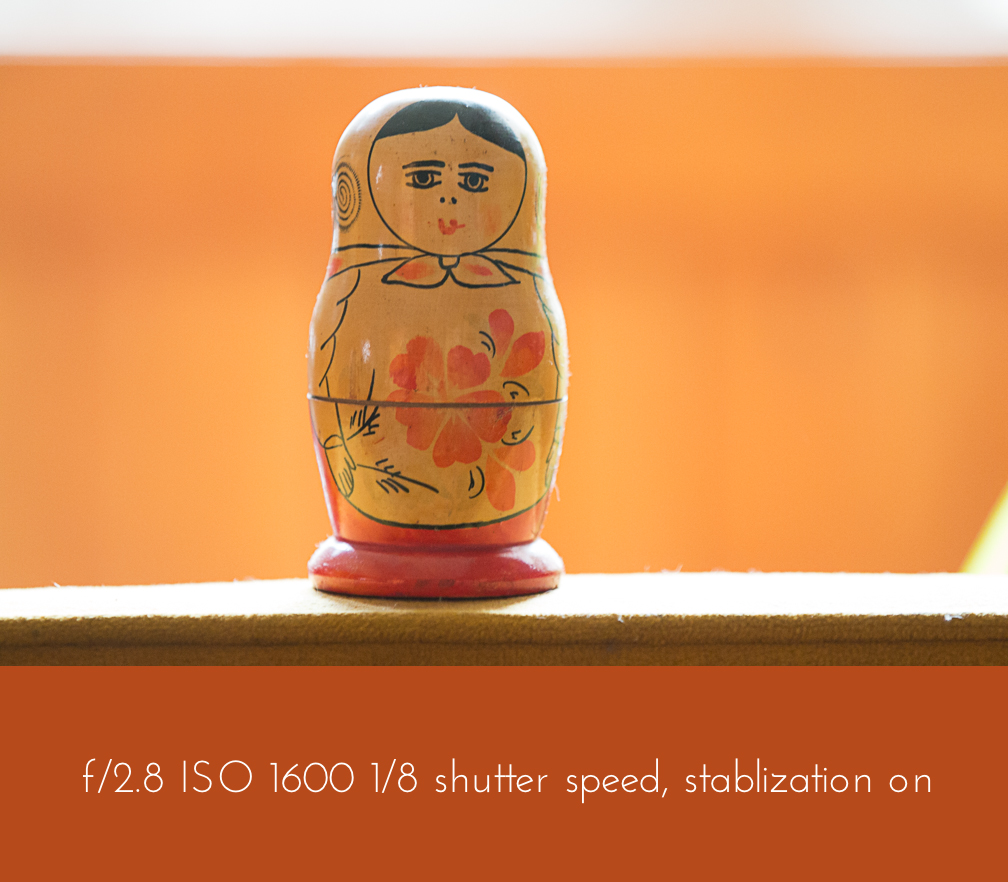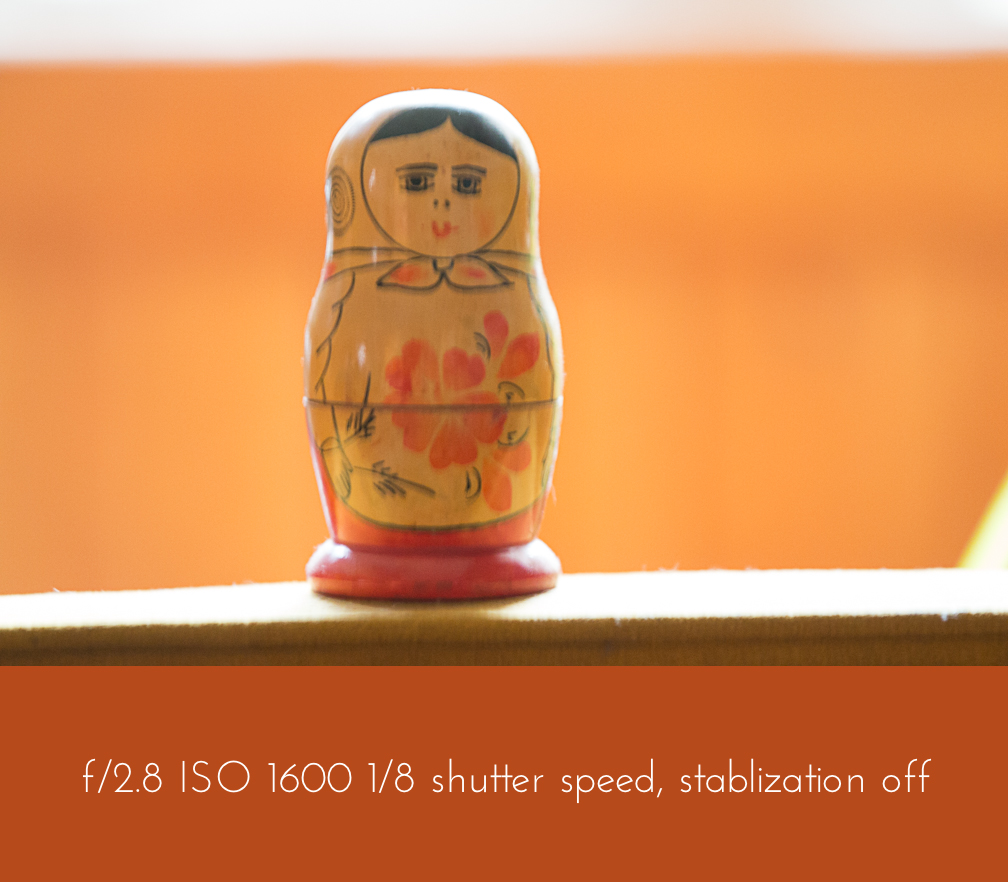Featured Products
Even if you’re a new photographer, you may have heard of image stabilization…both Canon and Nikon use stabilization in the kit lenses on their entry-level bodies. What you may not know is exactly how to use this feature to your advantage or what it even does. Read on for the skinny on stabilization.
Both Canon and Nikon use stabilization in some of their lenses. Canon calls it “IS” (Image Stabilization) while Nikon calls it “VR” (vibration reduction). Third-party manufacturers such as Tamron and Sigma also have lenses that have stabilization and use their own proprietary terms for it (Tamron: Vibration Compensation; Sigma: Optical Stabilization. Gets confusing, huh?)
For this article I’ll just refer to it as “stabilization.” Sony, Pentax, Olympus and others also have stabilization, but theirs occurs in the camera body instead of in the lens. This article is about lens stabilization only.
What is stabilization?
Stabilization is a feature built into lenses that is meant to reduce the effects of camera shake. Simply put, it allows you to shoot handheld (not on a tripod) at significantly lower shutter speeds than you could if stabilization was not activated. Different lenses have different levels of stablization — it is measured in stops. For example, some lenses claim to offer four stops of stabilization. This means that with stabilization activated, your effective shutter speed would be four stops higher than your actual shutter speed. So, if your in-camera shutter speed was 1/20, your photo would have the same sharpness as if it was taken at a shutter speed of 1/320; this is four stops higher than 1/20. Research on your lens will let you know how many stops of stabilization are offered. This number is an estimate but I’ve found it to be pretty accurate.
What lenses have it, and how do I know if a lens has it?
While not a hard and fast rule, stabilization is most often on zooms vs. primes. However, there are some zooms that are lacking it (Canon and Nikon’s 24-70 2.8 lenses don’t have it, though Tamron’s does) and there are primes that DO have it, especially very heavy ones (such as the 200mm f/2). Some manufacturers also produce versions of the same lens that do and do not have stabilization. The lenses with stabilization are more expensive. If you’re researching a lens and you’re not sure if it has stabilization or not, look in the lens’ name for the stabilization terminology depending on the manufacturer. If you have a lens that has stabilization, there will be a switch on your lens to turn the stabilization on and off (and, in some cases, switch between stabilization modes: one mode for stabilization in all directions and the other for only side to side, as in a panning shot).

Does stabilization work?
Simply put, yes. There are limitations to it, but it works. The example shots below are both straight out of camera examples. Both were taken with my Canon 70D and my 70-200 2.8 IS lens. They both have the same settings: 155mm, f/2.8, ISO 1600, and a ridiculously low shutter speed of 1/8. The only difference is that the first photo has stabilization activated and the second does not.


It’s pretty clear that the stabilization is working!
When should I use stabilization, and when should I not use it?
Stabilization is extremely useful. That said, there are some cases when it should be used and some when it should not. Stabilization definitely SHOULD be used if you’re shooting in any situation where your shutter speed is either lower than the rule of 1/focal length (i.e. if you’re shooting at 200mm, your shutter speed should be a minimum of 1/200) or lower than you know you can comfortably hand hold; some people have no issues hand holding at fairly low shutter speeds. That said, there’s no harm in it being on at slower shutter speeds. This is especially useful in low light situations where you cannot use a flash, such as church weddings where flash is not allowed.
Stabilization should NOT be used if you have your camera on a tripod. The tripod will counteract the stabilization and you will actually get blurry photos if the stabilization is on when the camera is on a tripod. Note: there are certain high end super telephoto lenses that are made to be shot on a tripod and have the ability to sense a tripod, thus turning stabilization off when using a tripod is not necessary. Consumer lenses do not have this feature. If you’re unsure, research your lens. Stabilization also does not need to be used when shutter speeds are not extremely low (for example, when shooting sports at high shutter speeds). The effect of the stabilizer can actually cause blur and softness at photos taken at higher shutter speeds. Once your shutter speed reaches 1/focal length, stabilization is not necessary.
Do I need lenses with IS?
That depends on what you shoot. If you’re someone who absolutely needs to shoot in low light without a flash, like at weddings, then I would absolutely recommend a lens with stabilization. You will not be able to get crisp shots at low shutter speeds without either a stabilized lens or a tripod. I find stabilized lenses much easier to maneuver with than a camera and lens on a tripod in a wedding situation.
However, if you’re not shooting in low light, or are in situations where you can use a flash and can bump your shutter speed a bit, stabilization may not be necessary, and this may be cheaper for you. I was in a situation several years back where I was trying to decide between an IS and non-IS version of a particular lens. I looked at my photos and realized that I was never coming close to shooting at or below shutter speeds that I could comfortably hand hold, so I opted for the non-IS version, because for me it wasn’t needed on that specific lens. If you’re on the fence, use your own photos and style to help you determine if stabilization is something you need.
Amy Short is a portrait and maternity photographer in Wakefield, RI. You can find her at amykristin.com and on Facebook.






































